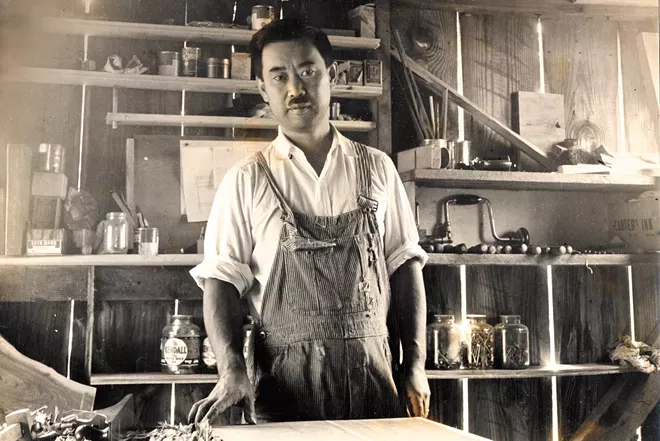
Most Spokane natives grow up going camping, hiking through local nature reserves and floating the Little Spokane River, but I didn't step foot into Riverside State Park until I was almost 22.
I started to feel the itch of confinement by June 2020. I hadn't been working, going to school or anywhere for that matter. I would pace around until inevitably deciding to lay back down and continue doom scrolling through various social media. My houseplants thrived in the sunlight that my window provided, but I didn't.
My unorganized bookshelf that held one too many hardcover editions of my favorite book from middle school stared at me from the corner of my room. I sorted through the shelves and pulled out every book I felt could possibly make me feel connected to the outside world.
Walden by Thoreau was a classic that I was determined to get through. I thought Peter Wohlleben's The Secret Life of Trees would help me imagine I was in the real world once again.
But no dice.
I braved the outside world in July to browse the shelves at a Barnes & Noble. I came across a book titled The Soul of a Tree: A Woodworker's Reflections by George Nakashima.
After devouring the book in an afternoon, I flipped back to the sketches I had seen earlier to take a closer look. Wildflowers, hills and trees like I had always seen in my daily life — familiar. Nakashima had attended the University of Washington studying architecture and was a victim of internment during the Second World War. I also learned that Nakashima, like myself, was born in Spokane.
While imprisoned at Camp Minidoka in Hunt, Idaho, Nakashima learned woodworking from a fellow Japanese American. He taught him the art of Japanese joinery, carpentry and the patience associated with the craft. From then on, Nakashima dedicated his life to woodworking.
After being released from Camp Minidoka, he made New Hope, Pennsylvania, the headquarters of George Nakashima Woodworkers in the late 1940s, and by August 2020, I happened to be driving through New Hope on a cross-country roadtrip.
Even from the passenger side of a Chevy Cruze it became evident to me why Nakashima adored New Hope. The highways are surrounded by lush greenery, the skies are blue, and crisp air funneled in from my window that made me want to take as many deep breaths as possible.
Nakashima formed a connection with every piece of wood he used in his work — he believed that every piece of furniture he made contained a story, and looking at the trees surrounding me, I couldn't help but agree.
Once I returned home I flipped through my now-worn copy of Nakashima's book. I noticed a quote I had highlighted near the front: "It's a land where a young heart may search out the meaning of existence."
Nakashima's description of the PNW made me realize that I had never truly appreciated the beauty of my hometown. His love of the natural world sparked my own adoration of nature that had been hiding until then. Spokane has plenty to offer in terms of enjoying the beauty of nature, but to think I had never explored that part of my hometown leaves me incredulous.
Nakashima's formative years in Washington influenced his outlook on life until his passing in 1990. When I see the sunset through the pine trees that overlook downtown Spokane, I'm thankful that he opened my eyes to the meaning of my own existence during a time when I needed it the most. ♦

